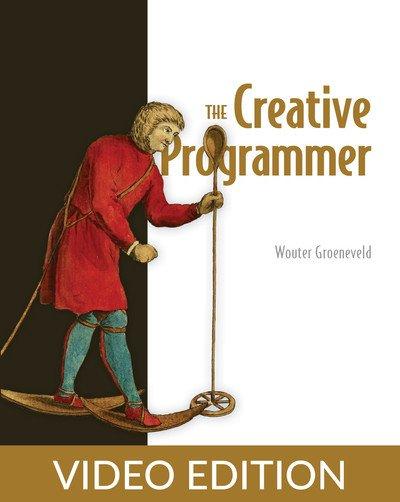English | MP4 | AVC 1280×720 | AAC 44KHz 2ch | 9h 9m | 1.34 GB
Programming is a creative act. These techniques will help you maximize the power of creativity to improve your software and your satisfaction in creating it.
Inside The Creative Programmer you’ll discover:
- The seven dimensions of creativity in software engineering
- The scientific understanding of creativity and how it translates to programming
- Actionable advice and thinking exercises that will make you a better programmer
- Innovative communication skills for working more efficiently on a team
- Creative problem-solving techniques for tackling complex challenges
In The Creative Programmer you’ll learn the processes and habits of highly creative individuals and discover how you can build creativity into your programming practice. This fascinating new book introduces the seven domains of creative problem solving and teaches practical techniques that apply those principles to software development.
Hand-drawn illustrations, reflective thought experiments, and brain-tickling example problems help you get your creative juices flowing—you’ll even be able to track your progress against a scientifically validated Creative Programming Problem Solving Test. Before you know it, you’ll be thinking up new and novel ways to tackle the big challenges of your projects.
Like composing music, starting a business, or designing a marketing campaign, programming is a creative activity. And just like technical skills, creativity can be learned and improved with practice! This thought-provoking book details practical methods to turn creativity into more effective problem solving, higher productivity, and better software.
The Creative Programmer explores seven dimensions of creativity in software engineering—technical knowledge, collaboration, constraints, critical thinking, curiosity, a creative state of mind, and creative techniques. As you read, you’ll apply insights about creativity from other disciplines to the challenges of software development. Numerous relevant examples and exercises drive each lesson home. You’ll especially enjoy the unique Creative Programming Problem Solving Test that helps you assess how creative you’ve been with a programming task.
what’s inside
- The scientific understanding of creativity and how it translates to programming
- Advice and exercises that will help you become a creative programmer
- Innovative communication skills for working more efficiently on a team
- Creative problem-solving techniques for tackling complex challenges
Table of Contents
1 Chapter 1. The creative road ahead
2 Chapter 1. Why creativity
3 Chapter 1. Different levels of creativity
4 Chapter 1. A road map to becoming more creative
5 Chapter 1. The structure of the following chapters
6 Chapter 2. Technical knowledge
7 Chapter 2. Gathering knowledge
8 Chapter 2. Internalizing knowledge
9 Chapter 2. Acting on knowledge
10 Chapter 2. A workflow example
11 Chapter 2. Summary
12 Chapter 3. Communication
13 Chapter 3. Collective geography
14 Chapter 3. Creative work in time
15 Chapter 3. When creative flow is impeded
16 Chapter 3. Summary
17 Chapter 4. Constraints
18 Chapter 4. Intrinsic constraints
19 Chapter 4. Imposed constraints
20 Chapter 4. Self-imposed constraints
21 Chapter 4. Hitting that sweet spot
22 Chapter 4. Working with constraints in practice
23 Chapter 4. Summary
24 Chapter 5. Critical thinking
25 Chapter 5. The creative process
26 Chapter 5. Creativity is the means, not the goal
27 Chapter 5. Common critical thinking fallacies
28 Chapter 5. Too much self-criticism
29 Chapter 5. Why others’ critical thinking matters
30 Chapter 5. Summary
31 Chapter 6. Curiosity
32 Chapter 6. Growing wonder and wanderlust
33 Chapter 6. Staying on the curious course
34 Chapter 6. From curiosity to motivation
35 Chapter 6. Multipotentiality
36 Chapter 6. Serendipitous discoveries
37 Chapter 6. About having fun
38 Chapter 6. Summary
39 Chapter 7. Creative state of mind
40 Chapter 7. The flow of deep work
41 Chapter 7. Interrupt!
42 Chapter 7. Triggering creative insights
43 Chapter 7. A corporate creative state of mind
44 Chapter 7. Summary
45 Chapter 8. Creative techniques
46 Chapter 8. A selection The artist’s toolbox
47 Chapter 8. A selection The writer’s toolbox
48 Chapter 8. A selection The programmer’s toolbox
49 Chapter 8. Summary
50 Chapter 9. Final thoughts on creativity
51 Chapter 9. On the evolving perspective of creativity
52 Chapter 9. When not to be creative
53 Chapter 9. Further reading
Resolve the captcha to access the links!
